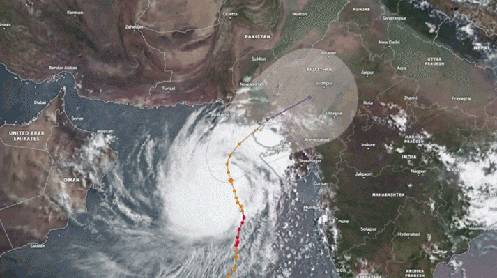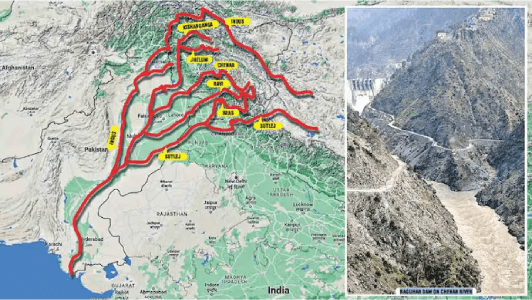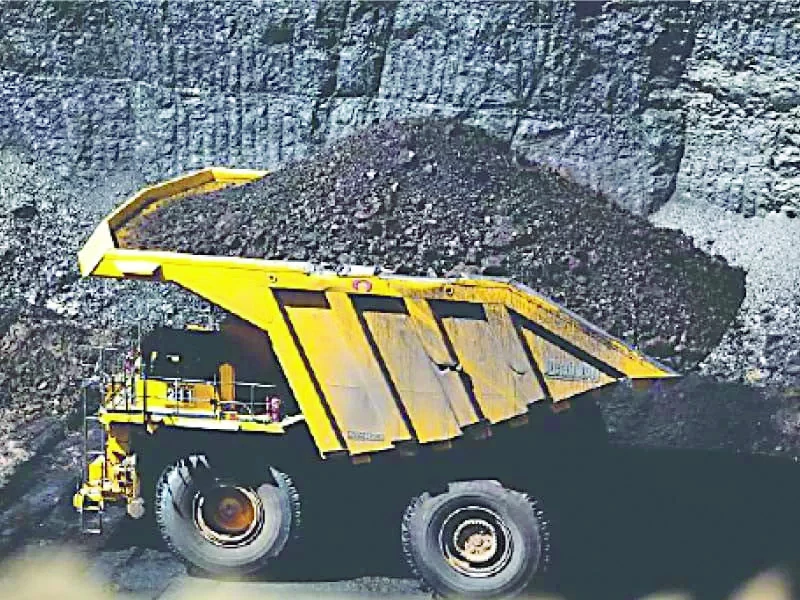Thousands of people living in coastal towns and small islands in Thatta, Sujawal and Badin districts on Tuesday left their homes for safer places, two days before a ferocious cyclone was expected to make a landfall on Thursday (tomorrow) afternoon.
Classified as a “Very Severe Cyclonic Storm” of Category 3, Biparjoy is expected to land around Thursday evening between Karachi and Mandvi in India’s Gujarat, with winds of approximately 140-150 kilometres per hour (km/h) and gusts up to 170 km/h.
According to the latest forecast, the cyclone was expected to maintain a northward trajectory until the morning of June 14 and then it was likely to re-curve eastward and make its landfall between Keti Bandar in Thatta district and the Indian Gujarat coastline.
The areas likely to be affected included Thatta, Badin, Sajawal, Tharparkar, Karachi, Mirpurkhas, Umerkot, Hyderabad, Ormara, Tando Allahyar and Tando Mohammad Khan, according to weather experts.
Read Authorities on high alert as cyclone nears Sindh’s coastline
Army, navy, rangers and district administrations started moving people to shelters and relief camps, which were set up in schools and other government buildings, said Climate Change Minister Sherry Rehman, while addressing a news conference in Islamabad.
Federal Minister for Power Khurram Dastgir and National Disaster Management Authority (NDMA) Chairman Lt-Gen Inam Haider Malik were also present at the news conference.
They provided a detailed account of the decisions taken at a high-level meeting with Prime Minister Shehbaz Sharif on the intensifying cyclone. Ships and boats had been moved from some coastal areas, while hospitals were put on high alert, added Rehman.
“About 100,000 people will be evacuated by Wednesday morning,” the NDMA chairman said. Sindh Chief Minister Murad Ali Shah later said that a total of 56,985 people had been shifted to safer places from Thatta, Sajawal and Badin districts by Tuesday night.
Chief Minister Shah said in a statement that 37 relief camps had been established in the three districts, adding that thousands of people had voluntary relocated themselves to the relief camps or other safer places.
According to a breakdown of the evacuation figures, 13,000 people left the vulnerable areas of Keti Bandar; 4,500 in Ghorabari; 19,038 in Shaheed Fazil Rahu; 12,300 in Badin; 6,537 in Shahbandar; 8,070 in Jati and 7,935 in Kharo Chhann.
The chief minister further said that seven relief camps had been set up in Keti Bandar; three in Ghobadari; 10 in Shaheed Fazil Rahu, three relief camps in Badin; 10 in Shahbandar; and four in Jati.
Earlier, Prime Minister Shehbaz, who chaired a meeting to review the preparedness ahead of the possible impact of the Biparjoy cyclone, directed the Sindh government, the NDMA and other relevant organisations to utilise all-out resources to protect the people.
Read More Sindh drafts in army for cyclone evacuations
In view of the storm, the prime minister also ordered for the establishment of mobile hospitals in the coastal areas to ensure adequate emergency medical assistance there. He also ordered for provision of clean drinking water and food at the camps.
The prime minister instructed Power Minister Engineer Khurram Dastgir Khan to ensure his presence in the districts of southern Sindh until the effects of the cyclone were over, to monitor the 24-hour power transmission system in the coastal areas.
The prime minister said that after the cyclone, the possible damage to the power transmission system should be repaired immediately. He also set up a committee to deal with the emergency situation.
To be headed by climate change minister, the committee would comprise power minister, food security minister, NDMA chairman, and representatives of Sindh and Balochistan governments, Meteorological Department and National Institute of Health (NIH).
The power minister informed the meeting that because of the incoming cyclone the shipments of the liquified natural gas (LNG) were not coming to Pakistan and that their schedules had been changed.
“We have decided that the gas supply has been diverted to power stations to continue energy production. Expected impacts like strong winds can impact our wind turbines in Chimb as the wind gusts beyond 90km/h can have effects on its functioning,” he added.
Also read Karachiites defying Section 144 imposed in coastal areas
He said that the other critical area to be impacted was transmission lines at the local level and also major transmission lines due to cyclonic winds. Moreover, the increased power infrastructure was also vulnerable like in South Thar 2,000 MW, he added.
“We are prepared to manage that power outage. The prime minister and water resources minister have allowed increasing the power production from Tarbela,” he informed the media later. Besides, 48-96 hours oil production would be sent to power generation.
The vulnerable power infrastructure area was lying mainly in Hyderabad Electric Power Supply Company (Hesco), which was on alert. “We have restored power infrastructure in the floods in record time and will ensure the same during the cyclone,” he vowed.
Rain begins
Meanwhile, light to heavy rains accompanied by dust storms hit the vulnerable districts in the afternoon after which the exercise of vacating the coastal areas paced up further. The power supply was suspended even in parts of Umerkot district, during the rain.
A pole of the main transmission line fell, disrupting the electric supply to Ladiyun grid station in the Sujawal district. In Badin district, union councils, including Ahmed Rajo, Seerani, Bhugra Memon, Bahdmi and Dodo Soomro, are likely to be affected.
On the other hand, the temporarily displaced people (TDPs) from Shaheed Fazil Rahu complained of lack of facilities and edible items at the camps and staged a sit-in protest on the main road, suspending the movement of traffic.
They complained that they have been left high and dry at the camp located in the public school, with no food or ration. The local deputy superintendent of police Agha Shahnawaz negotiated with the protesters to clear the road.
In the Thatta district, evacuation began from Keti Bunder. Deputy Commissioner Ghulam Farooq Soomro said they had already planned a strategy to vacate Keti Bunder if weather condition turned critical.
Soomro said that the administration was supplying cooked food, water and mosquito nets at the camps for the TDPs. He added that arrangements had also been made for mobile medical units and free medicines.
In Sujawal districts, the authorities have set up over a dozen relief camps in the government schools, where the affected residents of the coastal belt of Shah Bunder, Jati and Kharo Chhann were being relocated.
In neighbouring India, four boys drowned in rough seas off the western Indian financial hub of Mumbai on Tuesday. “Four boys drowned at Juhu beach on Monday evening. So far, we have found the bodies of two,” said a police official in Mumbai, south of Gujarat.
High waves in the Arabian Sea, accompanied by heavy rains and gusting winds pounded Gujarat’s coastal areas, uprooting trees and resulting in a wall collapse that killed three people in Kutch and Rajkot districts, authorities said.







